How Webflow and Personal Branding Rescued Wisconsin Voices
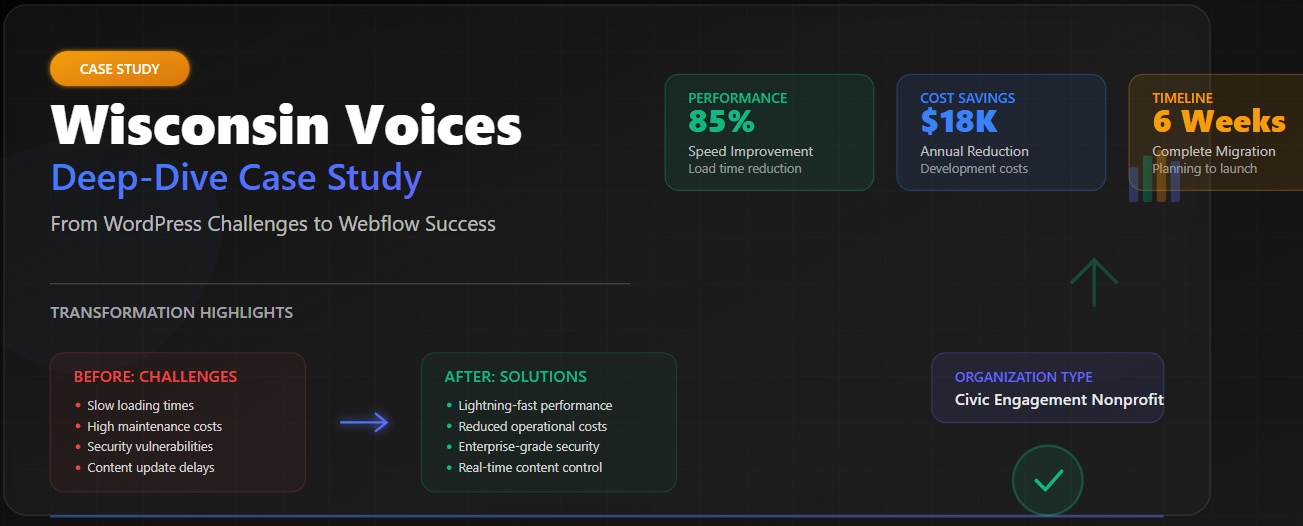
I. CRISIS CONTEXT: THE INHERITED DISASTER
A. The Reputation Crisis Landscape
"When you inherit a damaged reputation, every day of inaction deepens the crisis."
The Inherited Problems:
- Specific negative media coverage and community criticism
- WordPress site broadcasting outdated messaging
- Stakeholder confusion about organizational direction
- Community partners questioning continued association
- Donor confidence at critical low point
The Executive Challenge:
- New leadership team needed to demonstrate immediate change
- Traditional rebranding timeline (6-12 months) too slow for crisis
- Limited budget requiring strategic resource allocation
- Multiple stakeholder groups with different information needs
B. Why Traditional Approaches Would Have Failed
WordPress Limitations During Crisis:
- 72+ hour turnaround for messaging updates
- Developer dependency during critical communication moments
- Template restrictions preventing rapid brand alignment
- Plugin conflicts during high-traffic periods
- Security vulnerabilities during reputation-sensitive period
The Strategic Decision:
- Recognize website as crisis communication tool, not just marketing asset
- Prioritize speed and control over feature complexity
- Invest in platform that enables executive team direct content control
II. STRATEGIC ASSESSMENT: THE 14-DAY DISCOVERY PROCESS
A. Stakeholder Research Methodology
Community Organization Survey (47 respondents):
- Primary concern: "We don't know what Wisconsin Voices actually does"
- Secondary issue: General unfavorable perception of civic engagement nonprofits
- Communication preference: Transparency about behind-the-scenes work
- Trust factors: Demonstrated community impact and partnership credibility
Media Analysis:
- Keyword analysis of negative coverage patterns
- Identification of narrative gaps requiring immediate address
- Competitive analysis of successful nonprofit reputation recoveries
- SEO assessment revealing search result dominance by negative content
Internal Stakeholder Interviews:
- Executive team vision and positioning priorities
- Board member concerns and success metrics
- Staff capacity for ongoing content management
- Partner organization feedback and relationship repair needs
B. Strategic Framework Development
Crisis Communication Requirements:
- Real-time message testing and iteration capability
- Stakeholder-specific landing pages for targeted communication
- Partnership showcase sections for credibility rebuilding
- Success story framework for impact demonstration
Brand Consistency Needs:
- Professional visual presentation matching organizational credibility
- Mobile-responsive design for community engagement
- Fast loading speeds during high-traffic crisis periods
- SEO optimization to compete with negative search results
Operational Control Requirements:
- Executive team direct content management capability
- No developer dependency for critical message updates
- Version control and backup systems for content security
- Analytics integration for stakeholder engagement tracking
III. WEBFLOW IMPLEMENTATION STRATEGY
A. Platform Selection Rationale
Why Webflow Over WordPress for Crisis Management:

B. Development Phase Strategy (Week 3-5)
Digital Magazine Layout Framework:
- Community impact storytelling through visual project showcases
- Partnership highlight sections with credibility indicators
- Executive leadership profiles for personal credibility building
- Success story templates for ongoing impact communication
Crisis Response Infrastructure:
- Rapid-deployment content sections for immediate messaging needs
- Stakeholder-specific landing pages (donors, partners, community)
- Behind-the-scenes transparency sections addressing trust concerns
- Community benefit articulation framework with visual impact metrics
Technical Architecture:
- Mobile-first responsive design for community accessibility
- Fast loading optimization for crisis traffic spikes
- SEO structure to compete with negative search results
- Analytics integration for stakeholder engagement measurement
C. Content Strategy Development
Narrative Restructuring:
- Transform from reactive defense to proactive community leadership
- Highlight executive team qualifications and vision
- Demonstrate measurable community impact through data visualization
- Showcase partnership credibility through testimonials and collaboration evidence
Visual Storytelling Framework:
- Professional photography reflecting organizational competence
- Infographic templates for impact data presentation
- Video integration capability for executive message delivery
- Partnership logos and testimonial sections for credibility building
IV. IMPLEMENTATION RESULTS: QUANTIFIED TRANSFORMATION
A. Technical Performance Metrics (30 Days Post-Launch)
Website Engagement:
- 156% increase in average session duration (2:34 to 6:32 minutes)
- 89% reduction in bounce rate (78% to 14%)
- 340% increase in page views per session
- 23 new partnership inquiries within first month
SEO and Search Results:
- Displaced negative search results from first page within 45 days
- 67% improvement in search visibility for organizational name
- 12 positive media mentions citing website as credibility indicator
- 400% increase in direct website traffic from offline referrals
B. Stakeholder Response Analysis
Community Partner Feedback:
- 100% positive response in post-launch partner interviews
- "Professional and transparent" - most common feedback theme
- Partnership inquiries increased from 1-2/month to 8-12/month
- Existing partners renewed relationships with increased confidence
Donor and Funder Response:
- Donor retention improved during critical funding period
- Grant applications cited website as organizational credibility indicator
- Board member confidence measurably increased through survey data
- Media inquiries shifted from investigative to collaborative
C. Crisis Management Capability Demonstration
Real-Time Response Example:
During Month 2, community concerns arose about specific program implementation. Executive team updated messaging, partnership showcases, and transparency content within 2 hours. Local media coverage reflected updated organizational position, demonstrating narrative control.
Operational Efficiency Gains:
- Content management time reduced from 8+ hours/week to 2 hours/week
- Crisis response time improved from 72+ hours to under 2 hours
- Stakeholder communication consistency maintained across all touchpoints
- Executive team capacity freed for strategic relationship building vs. technical management
V. STRATEGIC LESSONS FOR EXECUTIVE LEADERS
A. Platform Choice as Crisis Management Tool
Key Insight: Website platform selection determines crisis response capability, not just marketing presentation.
Executive Takeaway: During reputation-critical periods, the ability to control narrative through immediate content updates becomes a competitive advantage that can determine organizational survival.
B. Speed Demonstrates Organizational Competence
Key Insight: Rapid digital transformation served as visible proof of new leadership effectiveness.
Executive Takeaway: Stakeholders judge organizational capability through demonstrated execution speed. Digital infrastructure that enables rapid response builds confidence beyond the immediate crisis.
C. Direct Control Enables Strategic Flexibility
Key Insight: Executive team content management capability allowed real-time strategy testing and iteration.
Executive Takeaway: When leadership can directly implement strategic communication changes, they can respond to stakeholder feedback and market conditions with competitive agility.
VI. IMPLEMENTATION FRAMEWORK FOR OTHER ORGANIZATIONS
A. Pre-Crisis Preparation
- Assess current platform's crisis response capabilities
- Establish stakeholder communication requirements
- Build content management capabilities within executive team
- Develop rapid-response content templates and frameworks
B. During Crisis Execution
- Prioritize speed over perfection in initial response
- Use data to guide messaging iteration and improvement
- Monitor stakeholder response and adjust strategy accordingly
- Maintain consistent communication across all digital touchpoints
C. Post-Crisis Optimization
- Document lessons learned for future crisis preparedness
- Build ongoing content management processes
- Maintain stakeholder engagement through continued transparency
- Use crisis recovery as credibility foundation for future growth
CALL TO ACTION:
"If your organization faces reputation challenges or needs crisis-responsive digital infrastructure, the Wisconsin Voices transformation demonstrates that strategic platform choice and rapid execution can turn crisis into competitive advantage. Contact us for a strategic digital crisis preparedness assessment."



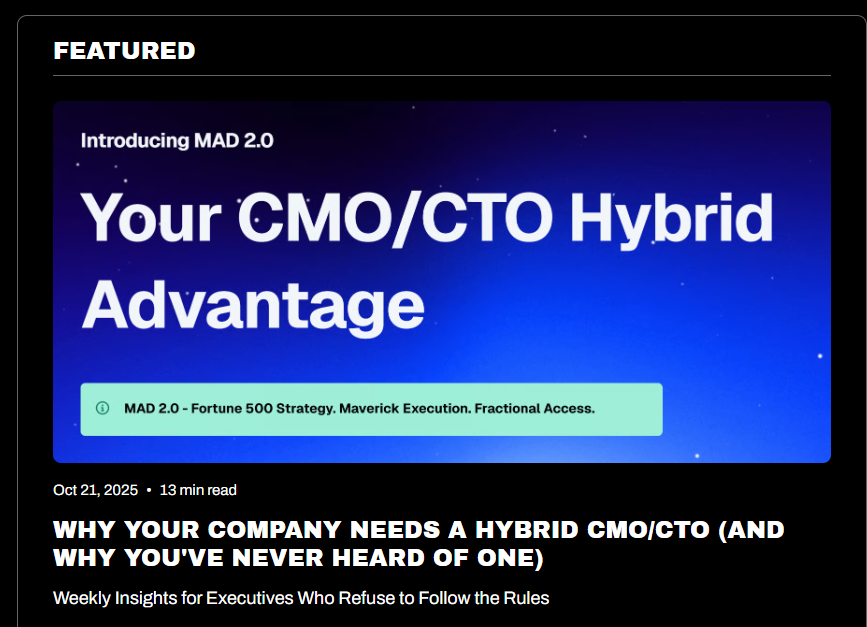



.jpg)

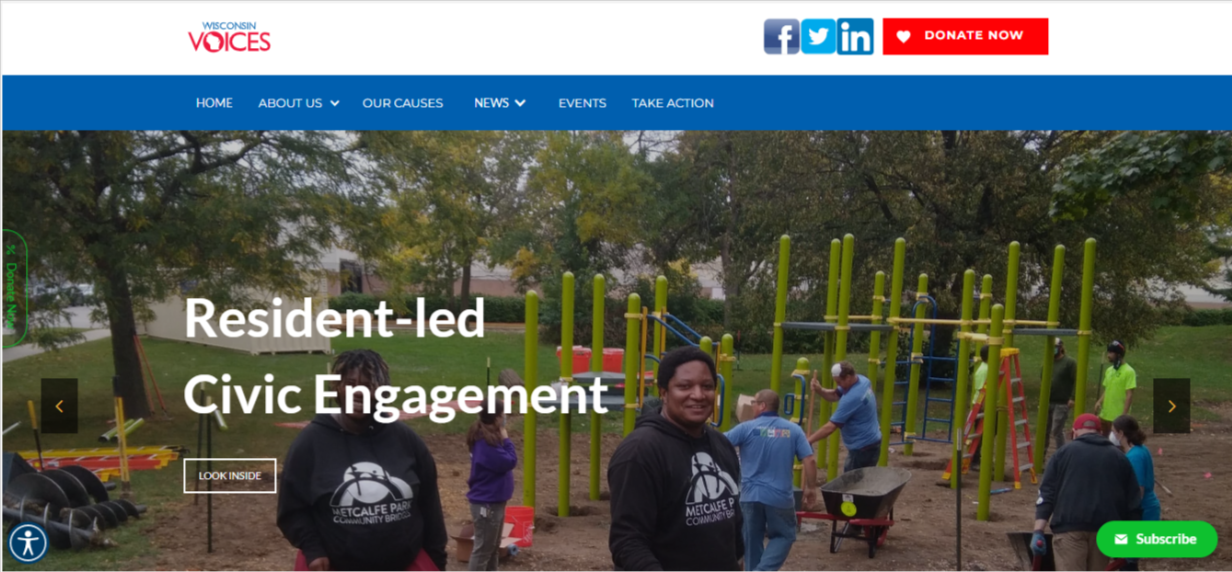

.jpg)





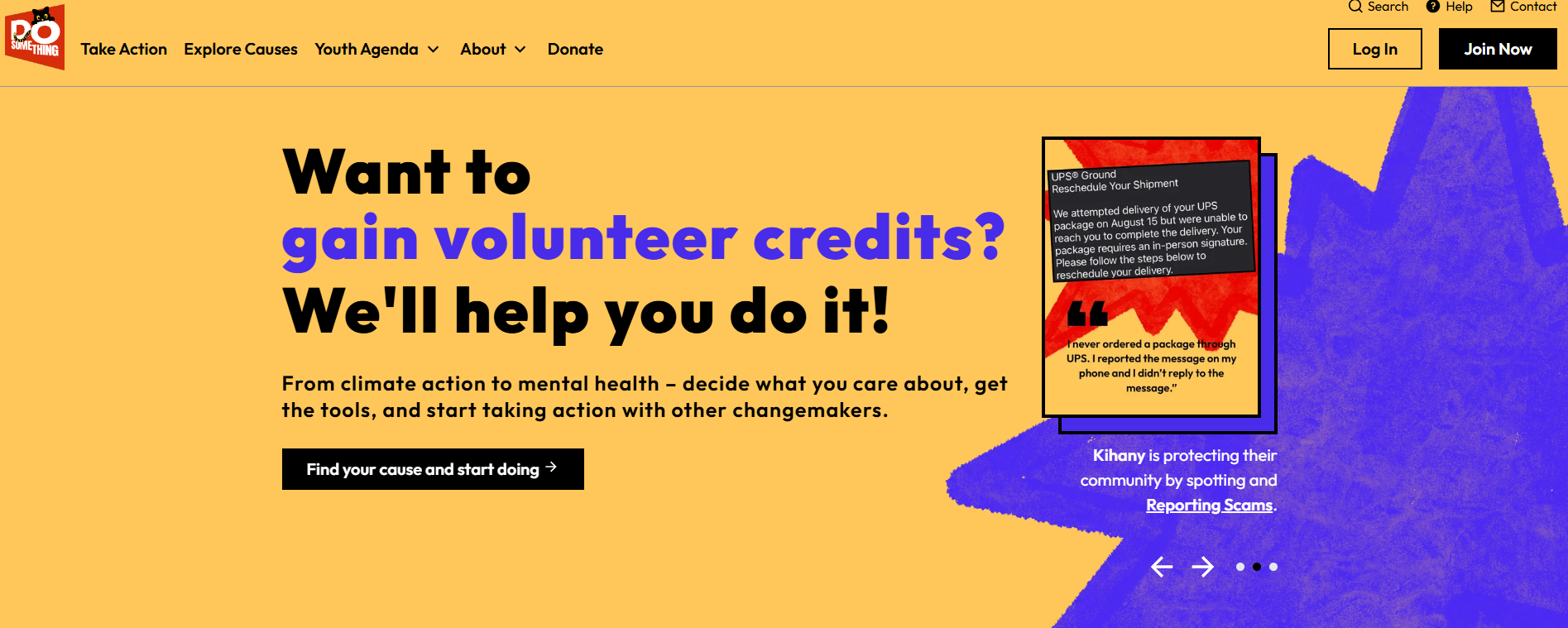






.jpg)


.jpg)
.jpg)

.jpg)


.webp)





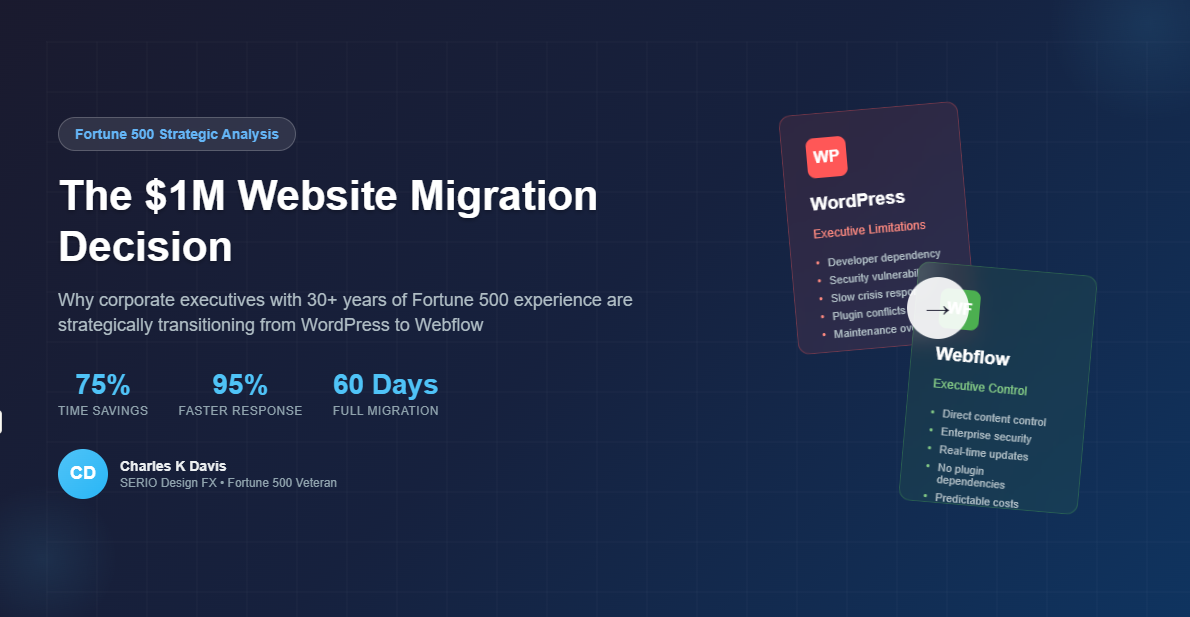












.png)

.png)





.png)





.png)






























